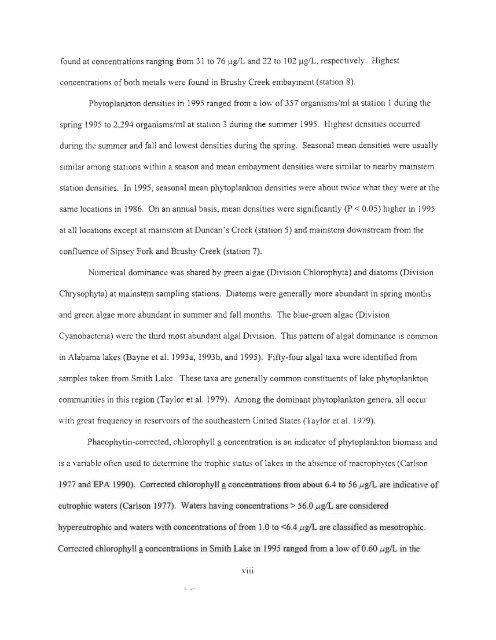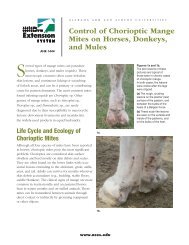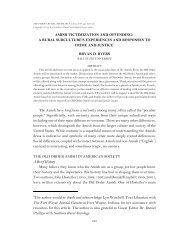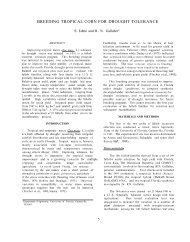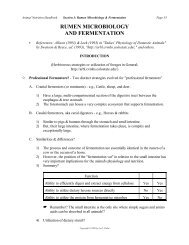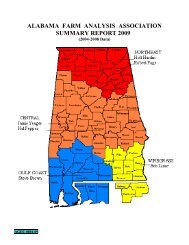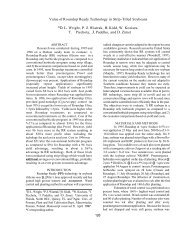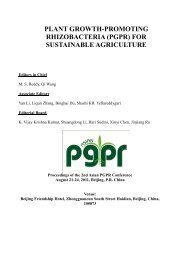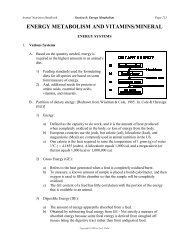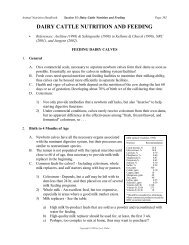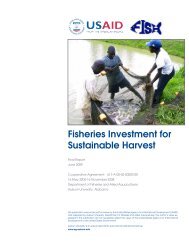LEWIS SMITH LAKE - Auburn University
LEWIS SMITH LAKE - Auburn University
LEWIS SMITH LAKE - Auburn University
You also want an ePaper? Increase the reach of your titles
YUMPU automatically turns print PDFs into web optimized ePapers that Google loves.
found at concentrations ranging from 31 to 76 Ilg/L and 22 to 102 Ilg/L, respectively. Highest<br />
concentrations ofboth metals were found in Brushy Creek embayment (station 8).<br />
Phytoplankton densities in 1995 ranged from a low of357 organisms/ml at station I during the<br />
spring 1995 to 2,294 organisms/ml at station 3 during the summer 1995. Highest densities occurred<br />
during the summer and fall and lowest densities during the spring. Seasonal mean densities were usually<br />
similar among stations within a season and mean embayment densities were similar to nearby mainstem<br />
station densities. In 1995, seasonal mean phytoplankton densities were about twice what they were at the<br />
same locations in 1986. On an annual basis, mean densities were significantly (p < 0.05) higher in 1995<br />
at all locations except at mainstem at Duncan's Creek (station 5) and mainstem downstream from the<br />
confluence ofSipsey Fork and Brushy Creek (station 7).<br />
Numerical dominance was shared by green algae (Division Chlorophyta) and diatoms (Division<br />
Chrysophyta) at mainstem sampling stations. Diatoms were generally more abundant in spring months<br />
and green algae more abundant in summer and fall months. The blue-green algae (Division<br />
Cyanobacteria) were the third most abundant algal Division. This pattern ofalgal dominance is common<br />
in Alabama lakes (Bayne et al. 1993a, 1993b, and 1995). Fifty-four algal taxa were identified from<br />
samples taken from Smith Lake. These taxa are generally common constituents of lake phytoplankton<br />
communities in this region (Taylor et al. 1979). Among the dominant phytoplankton genera, all occur<br />
with great frequency in reservoirs ofthe southeastern United States (Taylor et al. 1979).<br />
Phaeophytin-corrected, chlorophyll '" concentration is an indicator ofphytoplankton biomass and<br />
is a variable often used to determine the trophic status oflakes in the absence ofmacrophytes (Carlson<br />
1977 and EPA 1990). Corrected chlorophyll '" concentrations from about 6.4 to 56 J.Lg/L are indicative of<br />
eutrophic waters (Carlson 1977). Waters having concentrations> 56.0 J.Lg/L are considered<br />
hypereutrophic and waters with concentrations offrom 1.0 to


